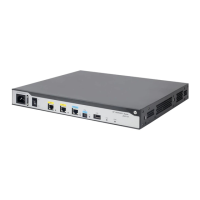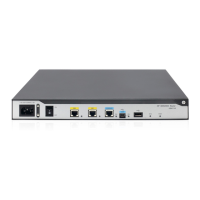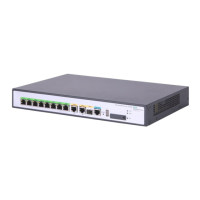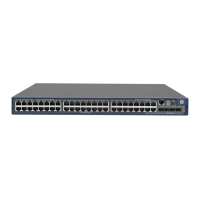214
Verifying the configuration
# Display information about the local default-group for IPv4 multicast transmission in each VPN
instance on PE 1.
[PE1] display multicast-domain default-group local
MD local default-group information:
Group address Source address Interface VPN instance
239.1.1.1 1.1.1.1 MTunnel0 a
# Display information about the local default-group for IPv4 multicast transmission in each VPN
instance on PE 2.
[PE2] display multicast-domain default-group local
MD local default-group information:
Group address Source address Interface VPN instance
239.1.1.1 1.1.1.2 MTunnel0 a
239.1.1.1 1.1.1.2 MTunnel1 b
# Display information about the local default-group for IPv4 multicast transmission in each VPN
instance on PE 3.
[PE3] display multicast-domain default-group local
MD local default-group information:
Group address Source address Interface VPN instance
239.1.1.1 1.1.1.3 MTunnel0 a
239.2.2.2 1.1.1.3 MTunnel1 b
Intra-AS M6VPE configuration example
Network requirements
As shown in Figure 72, configure intra-AS M6VPE to meet the following requirements:
receivers
• In VPN instance a, S 1 is a multicast source, and R 1, R 2, and R 3 are
receivers.
• In VPN instance b, S 2 is a multicast source, and R 4 is a receiver.
• For VPN instance a, the default-group is 239.1.1.1,
data-group range is 225.2.2.0 to 225.2.2.15.
• For VPN instance b, the default-
group is 239.2.2.2, and the
data-group range is 225.4.4.0 to 225.4.4.15.
VPN instances to which PE
interfaces belong
• PE 1:
GigabitEthernet 1/0/2 and GigabitEthernet 1/0/3 belong to VPN
instance a. GigabitEthernet 1/0/1 and Loopback 1 belong to the public
network.
• PE 2: GigabitEthernet 1/0/2 belongs to VPN instance b.
GigabitEthernet 1/0/3 belongs to VPN instance a. GigabitEthernet
1/0/1 and Loopback 1 belong to the public network.
• PE 3: GigabitEthernet 1/0/2 belongs to VPN instance a.
GigabitEthernet 1/0/3 and Loopback 2 belongs to VPN instance b.
GigabitEthernet 1/0/1 and Loopback 1 belong to the public network.
Unicast routing protocols and
MPLS
• Configure OSPF on the public network,
between the PE devices and the CE devices.
• Establish BGP peer connections between PE 1, PE 2, and PE 3 on
their respective Loopback 1.
• Configure MPLS on the public network.
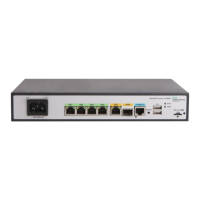
